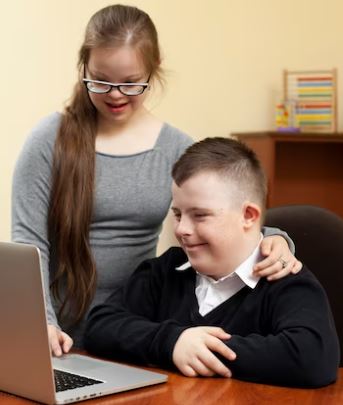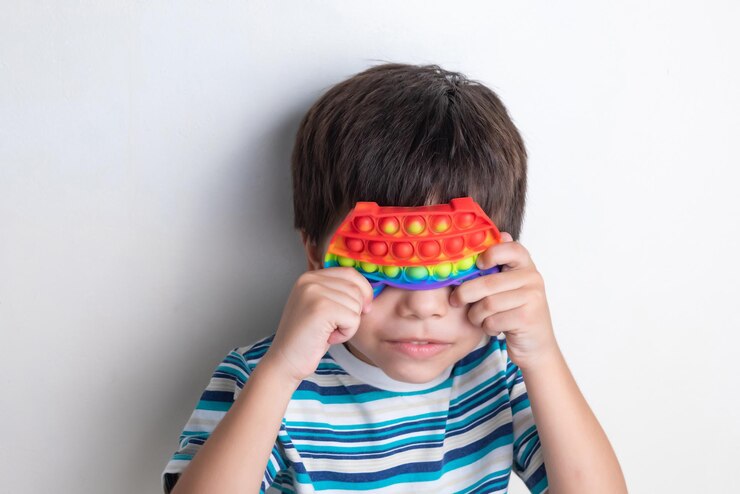
At its core, self-advocacy is the ability to speak up for yourself and communicate what you need to others. And as an important skill that begins developing in childhood and continues to advance through adulthood, it is essential to support and encourage children on the autism spectrum to be independent and advocate for themselves for a better and more secure future.
In India, where around 1.5% of children between the ages of two and nine are diagnosed with ASD, understanding and promoting their autonomy becomes critical. Besides, the statistic also highlights the pressing need for effective strategies that promote their independence and self-advocacy skills.
Our blog will delve into the practical approaches, evidence-based techniques, and transformative interventions that can help facilitate your child’s self-advocacy and foster their independence. So, let’s begin by exploring the multi-faceted aspects of empowering children on the autism spectrum:
Developing effective communication strategies to encourage self-expression
Helping your child express themselves better and become more independent involves the implementation of effective communication strategies. Here, personalizing the right communication strategies based on your child’s unique needs is key!
(Read More: Top 10 Strategies to Encourage Communication in Children with Autism)
You can also consider using augmentative and alternative communication systems, such as speech-generating devices, to empower non-vocal children to communicate effectively and independently. Encouraging social skills training and peer interactions will also help them grow socially and form meaningful connections. By implementing these strategies, you can create a welcoming environment that celebrates your child’s abilities and allows their self-expression to flourish.
Nurturing executive functioning skills and promoting self-regulation
Executive functioning skills, such as planning, organizing, and problem-solving, are essential for managing daily tasks and routines. Consistent routines and schedules also help create predictability, thus reducing anxiety in children on the autism spectrum and promoting self-advocacy. Here’s how you can help a child diagnosed with ASD take ownership of their responsibilities and foster independence –
- Provide visual schedules and checklists
- Break down tasks into smaller, simpler, and more understandable steps
- Offer verbal prompts if needed
- Ensure multiple opportunities for practicing these skills
- Set attainable long-term (completing dressing or bathroom routine independently) and short-term (removing shoes independently) Goals
- Reward positive behaviors that reflect autonomy
Likewise, supporting self-regulation in children with ASD helps them to recognize and manage their emotions, sensory needs, and impulses independently. For example, teaching relaxation techniques and creating calm spaces allow children to regulate their emotional states effectively, which provides them with a greater sense of freedom and fulfillment.
Fostering independence in everyday activities
Building daily living skills and fostering independence in performing everyday activities is crucial for children on the autism spectrum, especially given the benefits they yield in the long run. The practice not only enhances their ability to perform certain tasks but also contributes to their overall independence. Encouraging self-care skills, such as dressing, grooming, meal preparation, basic household chores, and money management, also facilitates the development of personal autonomy, while instilling feelings of self-sufficiency and self-confidence. When children are encouraged to master these essential proficiencies, they can independently navigate daily activities with confidence, laying the foundation for a more fulfilling and self-reliant future as they transition toward adulthood.
Enhancing social skills and cultivating meaningful relationships
By employing evidence-based strategies, parents and caregivers can help children with autism navigate social interactions with confidence and foster genuine connections with others. One effective approach, in this regard, is through social skills training, which targets specific areas of difficulty, such as initiating conversations, interpreting nonverbal cues, and maintaining appropriate personal space. When provided with structured opportunities for practice and reinforcement, children can also develop important social competencies at their own pace, hence paving the way for a more self-reliant future.
Transition planning and preparing for adulthood
As a parent of a child with ASD, one of the main objectives of preparing for adulthood is to ensure that they are as independent as possible. Socially and emotionally strengthening your child to face real-world challenges without significant assistance, especially by implementing the approaches mentioned above, can grant them a more secure adult life in the future. Providing the right support, such as vocational training, social skills development, and community integration programs, can also help pave a smoother road to employment opportunities, higher education, and, ultimately, a more independent life.
Although your child may demonstrate different needs compared to peers, it is crucial to recognize their many strengths, skills, talents, and interests. Finding a way to foster these assets will certainly be valuable in making your child’s transition to adulthood a smoother experience! Remember, by encouraging autonomy, children with autism gain a greater sense of control over their lives, promoting a positive self-image and reducing feelings of helplessness or dependence on others.
By equipping parents, caregivers, educators, and professionals with the necessary knowledge and tools, we at Early Autism Services (EAS) aspire to create a supportive environment that enables children with ASD to flourish.
Our team of experts, well-versed in the field of autism care and child development, will provide you with invaluable insights, practical tips, and evidence-based guidance that can be implemented in various settings, such as homes, schools, and communities. So, if you’re ready to embark on this journey of empowerment together, schedule a consultation with us right away – +91 89291 53820

















Recent Comments